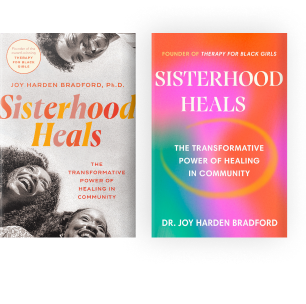“What is an anxious attachment style, and what do I do about it?”
Do you often worry about losing care or support from a loved one? Do you struggle with giving others space for too long to process their emotions? Maybe you are independent and don’t express your needs or maybe people say you are too clingy or territorial.
Someone with an anxious attachment style may believe they need a person or people to survive when they need deeper security within. Unfortunately, the opportunities to develop confidence as a child of knowing you belong, you are worthy, and valuable were robbed from the child. They look externally for validation or rely on their own efforts to keep people close.
Black women with an anxious attachment may be mislabeled and taken advantage of because people may not understand or confuse their desire for closeness as neediness. Young girls’ desire for vulnerability have been easy targets of bullying, and emotional and physical abuse, while others have been deemed as an outcast. Some women with anxious attachment styles may appear to be “strong” and “independent” but secretly crave connection and intimacy.
This article will help you identify what and where anxious attachment comes from and give tips on finding healthy ways of living with an anxious attachment style to regain a sense of confidence.
Where does it come from?
Someone with this style has experienced caregivers being inconsistent in their emotional reactions. They are unsure if their parents will be encouraging or dismissive. For example, one day, your parents are happy and validating; the next day, they are ignoring and dismissing your need to be loved. This happens for many reasons, such as parents may be inexperienced in their parenting and have difficulty accessing their own emotions, which causes them to parent ineffectively in this area. The child may develop the tendency to stay close to avoid the threat of them leaving, being forgotten, or dismissed, which may come off to others as “needy.”
RELATED: Why Do I Over Share” Dealing With Your Tendency to Spill Too Much of Your Own Tea
As demonstrated in early attachment studies, Mary Ainsworth found in her “strange situation study” that babies form attachment bonds with their mothers in the early stages of their lives (0-6 months). In the experiment, babies were separated from their caregivers temporarily and were observed on their reactions to when a stranger entered the room and how they responded when their parents returned. Some babies were unsure, uncertain, confused or took their time returning to their mothers. Through multiple replications of this experiment and numerous studies on attachment styles in children, anxious-ambivalent became a known attachment style dating back to the 1960s.
As a young child grows into a young woman, the child becomes unsure and uncertain of their emotions. A child may assume “everything happens because of me,” and if not addressed appropriately in this developmental stage, this can transition into an adult having emotional outbursts, lacking self-soothing techniques, and having a desire to be rescued by others and more.
What does it look like, and what can I do about it?
More signs of an anxious attachment style include but are not limited to:
- Fear
- Anxiety
- Difficulty exploring or distress when separated from trusted people.
- Feeling independent and not needing others
- Craving intimacy but cannot trust others.
- Pulls away when others are needy.
RELATED: Lets Get Real About Touch Deprivation
At times, struggling with controlling difficult emotions is a challenge for these individuals. For instance, they may overreact or assume they are not cared for; their fears may heighten if their need to be cared for in a particular way is repeatedly rejected, ignored, or mishandled. Some individuals may spiral if their nervous system alerts them that they are not safe or secure anymore. One of the biggest fears of this style is being left alone and without a secure base.
To counteract these sorts of reactions, one must be willing to engage in new self-soothing techniques. They should first acknowledge what is underneath the emotional responses- the fear of being left alone. Additionally, they should identify an alternative narrative supporting healthy relationships with others. Consider the following reflective questions: What else might be being triggered? What can you do when you are left alone without engaging the narrative that you will always be alone or no one wants you? What else might be going on with that person you reached out to?
As a Black woman, it may be harder to express these emotions openly right away. When the expectation of your lived experiences has been to be strong, keep it together, and not to let anyone see you being weak, it will take time to undo these beliefs. Clinical psychologist, Dr. Adia Gooden, encourages women to consider their unconditional worth to move from being stuck to low self-esteem and unworthiness – even of expressing your emotions. Sometimes we get stuck in believing people don’t have time for our emotions and we want to avoid being a burden.
RELATED: Therapist Help: Tips for Cultivating Emotionally Safe Environments
The reality is you need people, and they need you. You want to work on taking steps toward healthier responses when people are unavailable. In addition to creating new mental narratives, also consider going to talk therapy, or joining a group coaching class or community to develop relationships with people who are also learning the importance of boundaries and supporting healthy, secured attachments.
References:
Ainsworth, M. D. (1985). Patterns of infant-mother attachments: antecedents and effects on development. Bulletin of the New York Academy of medicine, 61(9), 771.









